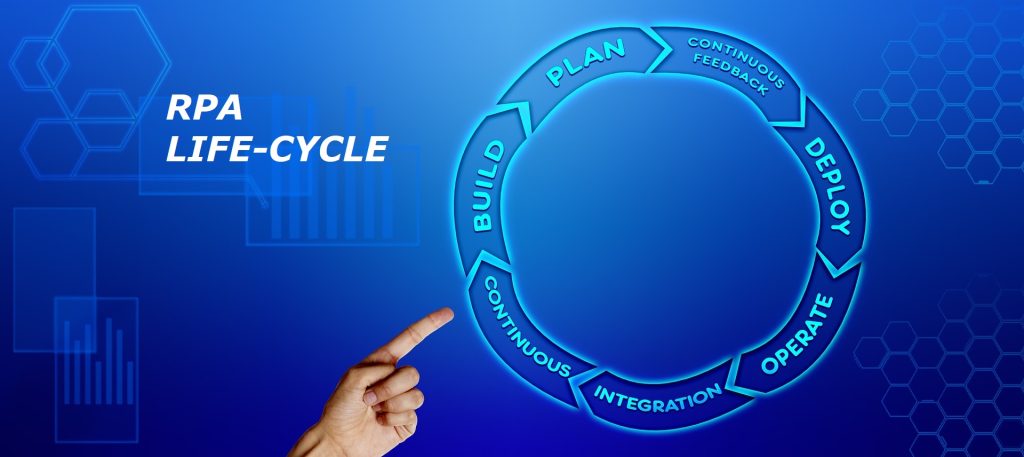RPA and AI have been making waves in the business world for its ability to automate repetitive and routine tasks, improving efficiency and reducing errors. Now, with new technologies, you have to understand and adapt. You also need to keep an eye on ROI and make sure your costs don’t escalate. Let’s look at the RPA life-cycle.

Stages:
The RPA Life-Cycle consists of several stages: Planning, Development, Testing, Deployment, and Maintenance.
During the planning stage, businesses identify the tasks and processes that are suitable for automation and determine the resources and expertise needed to support the implementation of RPA.
- The development stage involves creating the RPA solution, which may include designing and building bots, integrating systems, and training the RPA system.
- The testing stage involves testing the RPA solution to ensure that it is functioning correctly and meets the needs of the business. The deployment stage involves rolling out the RPA solution to the live environment and making it available to users.
- The maintenance stage involves ongoing monitoring and management of the RPA solution to ensure that it continues to function properly and meets the needs of the business.
Costs:
- Planning: Enterprises may spend a significant amount of time and resources during the planning stage of the RPA Life-Cycle to ensure that they have a clear understanding of their automation goals and the resources and expertise needed to support the implementation of RPA. Autosmic helps to shorten this stage with Automated Task Mining and Process Modeling capabilities.
- Development: The development stage may also require a significant investment of time and resources, as it involves designing and building the RPA solution, integrating systems, and training the RPA system. With a screen activity recorder and a drag and drop cloud designer, you can work pretty quickly through this phase.
- Testing: Ensuring that the RPA solution is functioning correctly and meets the needs of the business is critical, and may require a significant investment of time and resources during the testing stage. Having the right amount of test data available and testing various exception scenarios is important at this stage.
- Deployment: The deployment stage may also require a significant investment, as it involves rolling out the RPA solution to the live environment and making it available to users. If you have deployment tools, that simplify your deployment and management, this phase can be quick.
- Maintenance: Ongoing monitoring and management of the RPA solution to ensure that it continues to function properly and meets the needs of the business is important and may require a significant investment of time and resources during the maintenance stage of the RPA Life-Cycle. Monitoring is an on-going activity and having the visibility through the tool-set is very important. Similarly if an application changes, bots may need to be maintained. Allowing this process to happen as smoothly as possible is a big factor that determines how hard and expensive your maintenance cycles are going to be. Autosmic provides special features for this stage.
Overall, the specific amount of time and resources that enterprises spend on each part of the RPA Life-Cycle will depend on the specific needs and goals of the enterprise, as well as the complexity and scope of the RPA implementation. Autosmic simplifies the journey by providing tooling at all stages of RPA. We would be happy to help guide you on your journey. Get in touch